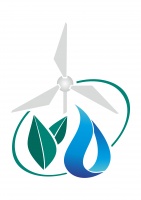Comparison of practices
| Название практики | Increasing water availability of pastures by constructing sardobas | Application of furrow-based counter irrigation |
|---|---|---|
| Category | Water resources | Water resources |
| Tool | System for enhancing water availability | Irrigation technique and technology |
| Field of application |
|
|
| Usability of practice for adaptation to climate change | Moderate | Moderate |
| Implemented by | Ministry of Nature Conservation of Turkmenistan |
Central Asian Research Institute of Irrigation (SANIIRI) |
| Used by |
Country: Turkmenistan |
Country: Uzbekistan Province: Xorazm Region District: Urganch District |
| Local specifics | 17,238 ha of barkhan (sand dune), takyr (dry-type playa) and solonchak (moist-type playa) sites of the Kara Kum Desert; deep ground water occurrence |
Khorezm Region lies in the northwest of Uzbekistan (between the latitudes of 40N and 42N and longitudes of 60E and 62E). The Region stretches for 280 km from northwest to southeast, and for 80 km – from west to east. The adyr relief is mainly formed by moist-type playa and, to a lesser extent, by meadow and grey-dessert soils; the depressions relief is formed by sands. |
| Practice usage period |
Start date: 01.01.2012 End date: 31.12.2016 |
Start date: 01.01.2004 End date: 31.12.2016 |
| Problem solved through this practice | Desertification and decreased productivity of desert pastures due to over-grazing around existing cattle watering sites |
Inefficient field-level use of irrigation water |
| Tools used in the practice | Technology of building sardobas (stone-dome covered water collection and storage reservoirs) to enhance pasture water supply |
Technology of furrow-based counter irrigation |
| Description of the practice and its results | Main actions:
Actions:
Results:
|
Technology applicability In the majority of Central Asian countries, irrigated agriculture is based on flooding irrigation (ex.: wheat) and/or furrow-based irrigation (other crops). Against the background of climate change and global water shortage, the traditional and/or currently practiced irrigation methods have lost their relevance and are no longer justified, in particular, in the Aral Sea area. In addition, watering the whole field of uneven relief based on traditional furrow-based technique requires long time. In many cases, traditional watering leads to uneven water distribution (alternating dry and bogging spots) across the field and rising ground water level. The suggested technology of counter irrigation is suitable for watering areas with even/flat relief, i.e. flat/lowland territories of Central Asian countries. Technology description The technology is quite simple and consists of simultaneous irrigation of a field from two sides. It was appraised in Uzbekistan’s northwestern part within the framework of the ZEF/UNESCO Project. The technology’s pilot application demonstrated that furrow-based counter irrigation can be used as a technical option of irrigating undeviating (even) sites and increases water efficiency due to more uniform water distribution along furrows. This effective water-conservation technology has been already widely tested in Central Asian countries, including Uzbekistan (Syr Darya and Khorezm Regions) by SANIIRI. Advantages
|
| Lessons learnt and recommendations made | Lessons learnt: Construction of sardobas in takyr areas allows enhancing pasture water supply, thus, leading to the restoration of over-grazed pastures. Recommendations: The practice requires long-term planning and an integrated response with the early-on engagement of desertification experts (designing a set of measures to protect takyrs from sand drifts), state agencies (technical assistance) and pasture users (observance of pasture rotation schemes, prevention of takyrs from contamination and pollution). |
Lessons learnt: The furrow-based counter irrigation technology is rather simple (entails simultaneous irrigation of a field from both sides) and represents a justified technical option of irrigating undeviating (even) relief land and increasing water efficiency due to more uniform water distribution along furrows. Recommendations: The irrigation technology is recommended for application by farmers prior to controlling ground water level and enhancing land reclamation condition via more radical measures. Under the condition of available investment, this watering method can be widely introduced on engineered basis. |
| Source of practice | Traditional tools transferred from generation to generation that proved their efficiency in modern conditions |
|
| Readiness for implementation |
1. Cost of implementation: Low 2. Approximate cost of investment per 1 ha: $1,000-5,000 3. O&M costs: Low 4. Expert support: Needed at implementation stage |
1. Cost of implementation: High 2. Approximate cost of investment per 1 ha: 3. O&M costs: High 4. Expert support: Not needed |
| Brief information on the project | Project title: Responding to climate change risks for dekhan farming system of Turkmenistan on national and local levels. Project duration: 2012-2016. Project goal and objectives: build the adaptation capacity to respond to climate change impacts, including variability on local and national levels. Project beneficiaries: Bori Settlement (over 1,100 people) and Bo-Kurdak Settlement (about 4,500 people). Project implementer: Ministry of Nature Conservation and UNDP |
Project beneficiaries: water consumers and WUAs. Project implementer: Central Asian Research Institute of Irrigation (SANIIRI) |
| Funding source | Government of Turkmenistan, Adaptation Facility | ZEF/UNESCO in the Republic of Uzbekistan |
| Information sources | 1) Reference Book on climatically optimized investment in rural areas of the Aral Sea Basin (based on the examples of Uzbekistan and Tajikistan), Tashkent 2016; 2) Paluashova, G.K., Shirokova, Yu.I. “Efficiency of furrow-based counter irrigation of cotton in Khorezm conditions” (http://www.cawater-info.net/bk /improvement- irrigated-agriculture/files/paluashova-shirokova.pdf); 3) Paluashova, G. (2005), “Investigating land saline regime due to changed irrigation technology in the conditions of Khorezm Oasis. Materials of “Scientific Support as a Factor of Sustainable Water Sector Development” International Research and Applied Conference (Taraz, Kazakhstan). |
|
| Contacts of a person, who filled this form | SIC ICWC |
SIC ICWC |
| Form submission date | 04.04.2018 | 18.05.2018 |




